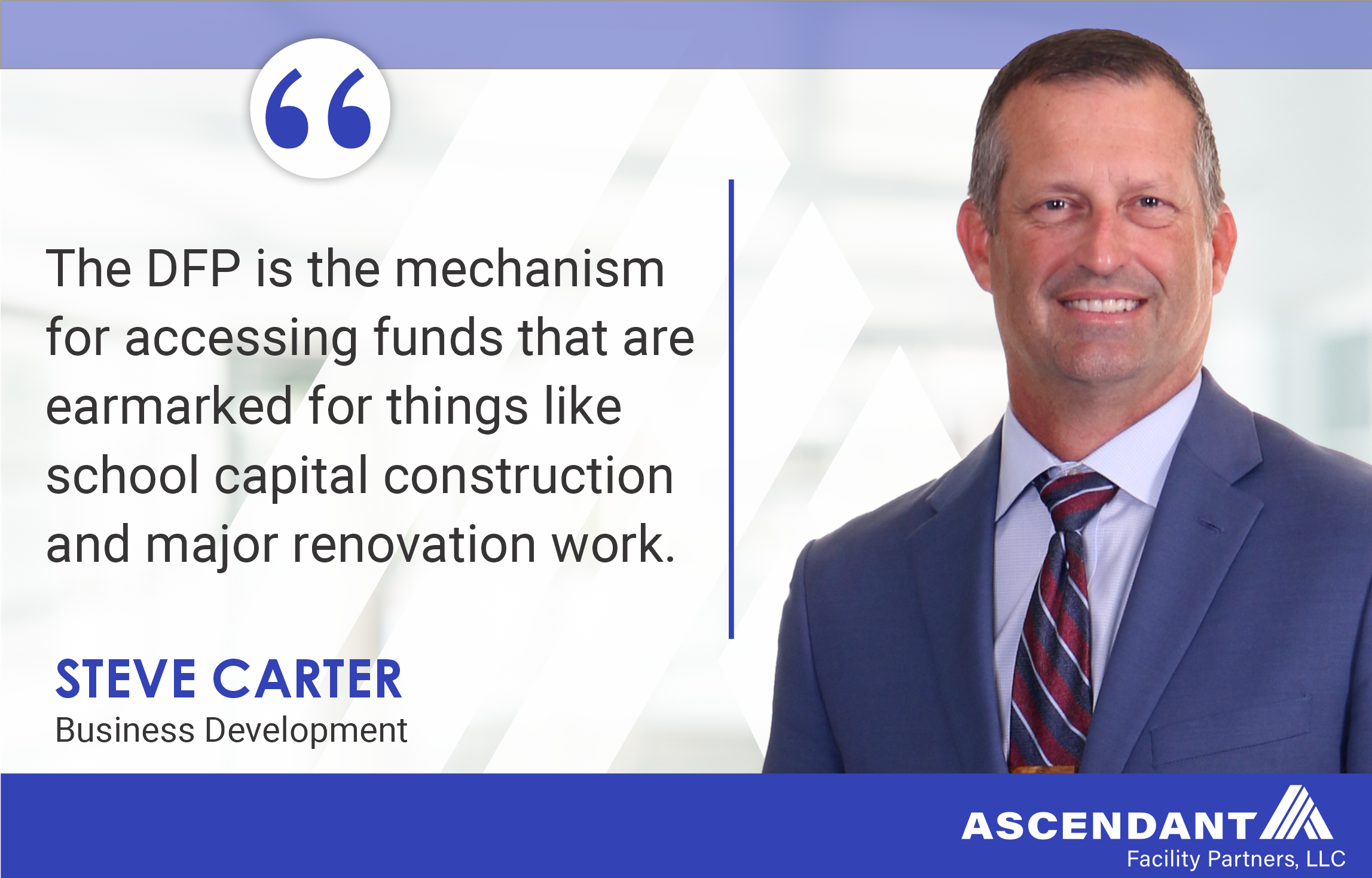The Power of District Facility Plans (DFP)
In the labyrinth of school administration, where every dollar counts and every brick must be strategically placed, District Facility Plans (DFPs) serve as guiding stars. These plans are more than mere blueprints; they’re the keys to accessing funds crucial for school capital construction and major renovations. But what exactly are they, and how do they navigate the complex terrain of educational infrastructure?
DFPs are the “Yellow Brick Road” of School Success
Steve Carter, Business Development, former superintendent, sheds light on the significance of DFPs. According to Carter, “The DFP is the mechanism for accessing funds that are earmarked for things like school capital construction and major renovation work.” It’s the roadmap districts rely on to secure essential funding for critical projects. In many cases, you must make your case to access these funds and a DFP does just that.

These funds play a pivotal role in the calculation of “Needs Based” funding, ensuring that districts can address pressing infrastructure needs. However, creating a DFP is no simple feat. It requires a committee comprising various stakeholders within a school district, including parents, teachers, administrators, and local board members. This diverse assembly of minds collaborates to analyze a plethora of data, such as building conditions, financial information, demographics, and more, to craft a comprehensive plan tailored to the district’s unique needs.
Carter emphasizes the pivotal role of these plans in navigating the complex landscape of educational infrastructure, ensuring that schools can meet the evolving needs of their students and communities.
DFPs Do More with Less
However, the journey doesn’t end with crafting a plan. Implementing DFPs poses its own set of challenges. If you’ve ever tackled a project on your own without a plan, then you probably understand just how much waste that can create. We call it “flying by the seat of your pants,” and it simply doesn’t mesh with school district budgets, where everything should be considered and planned for accordingly.
Because of this, one of the most daunting tasks is maximizing a school’s limited budget to address pressing infrastructure needs effectively. This is where Ascendant Facility Partners (AFP) steps in. As Carter highlights, “AFP can assist districts in meeting the needs identified on their district facilities plans by utilizing savings based upon identified energy savings opportunities.” By leveraging energy savings to augment budgets, AFP empowers districts to make meaningful investments in infrastructure without stretching resources thin.

Every School Facility is Different, & So is Our Approach
AFP’s tailored approach ensures that each district’s unique needs are addressed. “AFP can assist with meeting the needs of each district by addressing the unique requirements based upon the size and demographics of each school district,” Carter explains. This personalized approach underscores AFP’s commitment to partnering with districts to create sustainable, future-ready educational environments.
In a landscape where educational infrastructure demands continue to evolve, DFPs serve as beacons of progress, guiding districts toward a future where every student has access to safe, conducive learning environments. With the right partners and a strategic approach, districts can navigate the complexities of infrastructure planning with confidence, ensuring that every dollar invested yields long-term benefits for students, educators, and communities alike. When you have a plan, it becomes much easier to pivot. This is especially important when technologies change and facilities mature. A DFP gives you a long-term outlook with a side-effect of enhanced adaptability. It’s a win-win, and we at AFP are happy to help.
